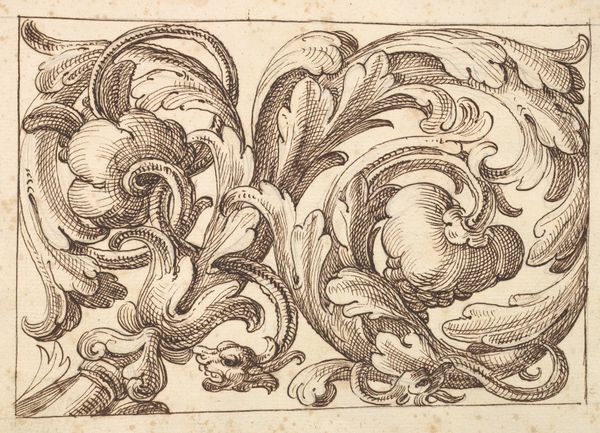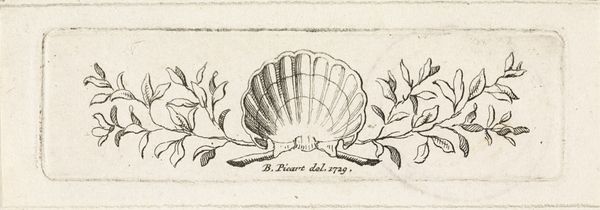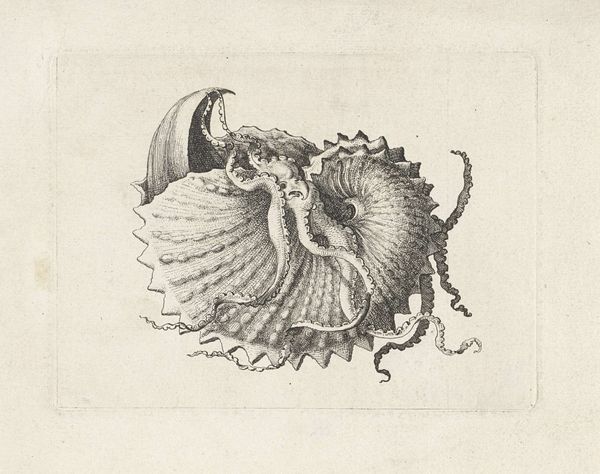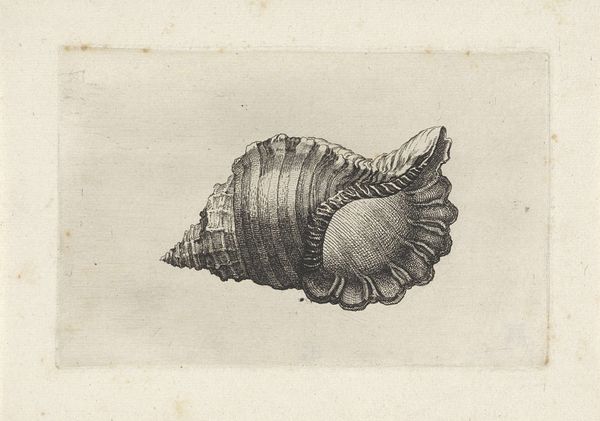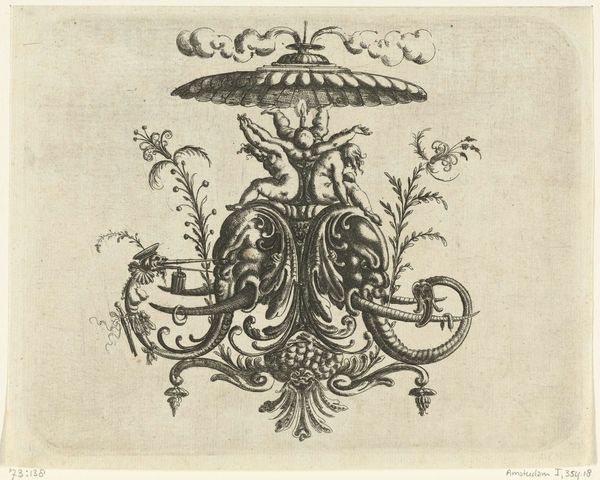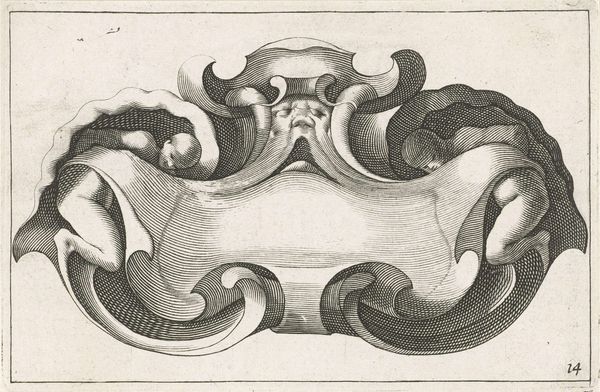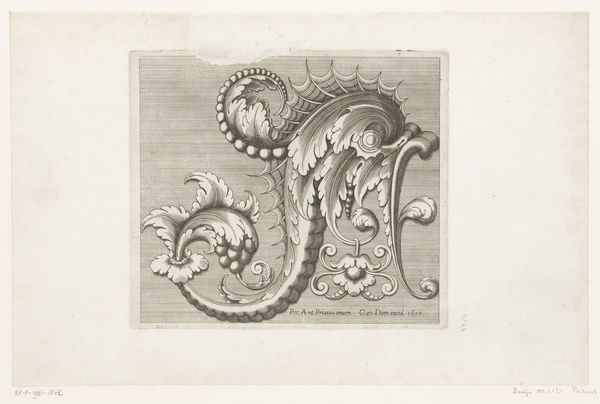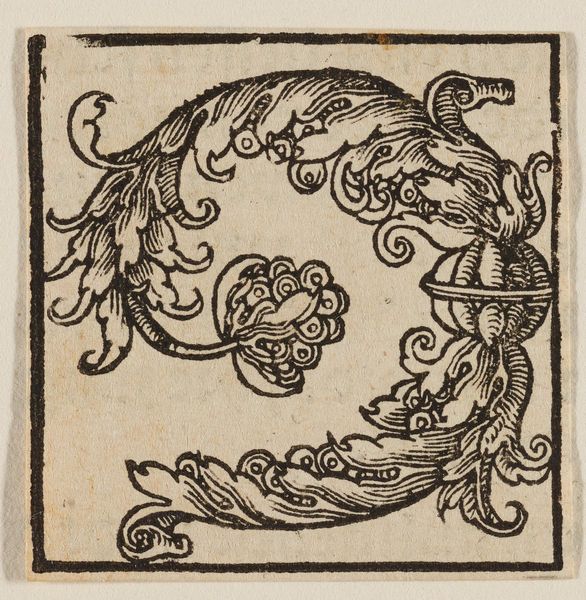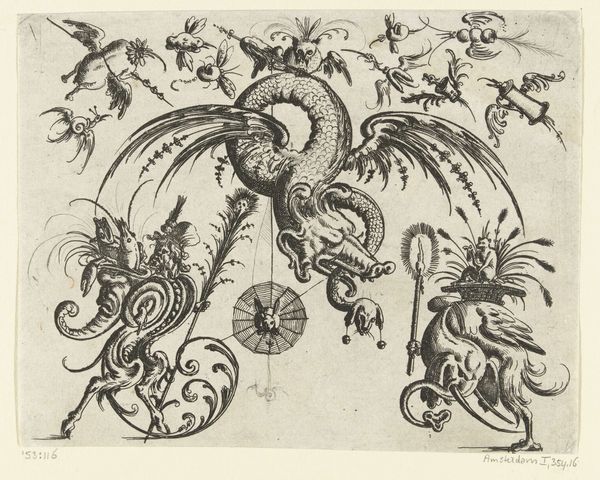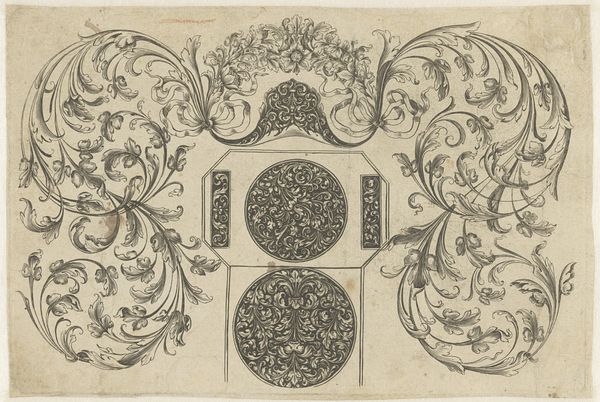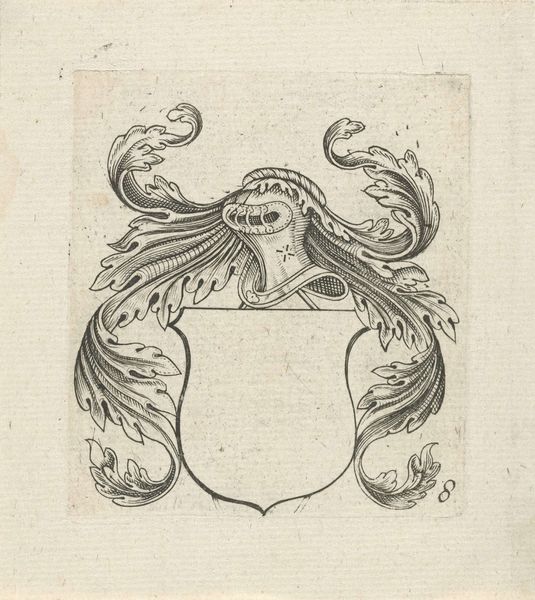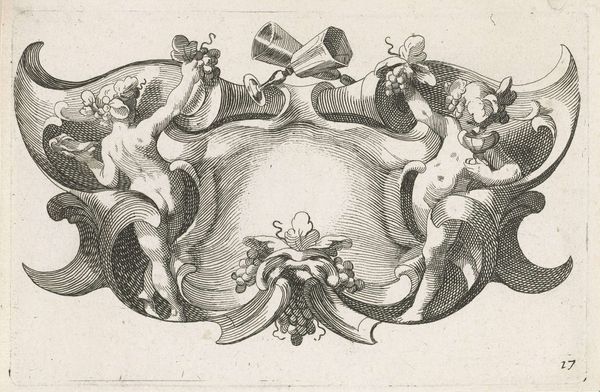
engraving
#
baroque
#
old engraving style
#
form
#
personal sketchbook
#
line
#
decorative-art
#
engraving
Dimensions: height 36 mm, width 158 mm
Copyright: Rijks Museum: Open Domain
Curator: Today, we’re looking at Bernard Picart's "Ornament met schelp," an engraving created sometime between 1683 and 1733. It’s currently held here at the Rijksmuseum. Editor: It strikes me as a very ordered piece. A symmetrical composition centering around the shell motif with these sweeping decorative elements extending outward, there is definitely some rhythm to it all. Curator: Indeed. It's exemplary of Baroque decorative art, with the elaborate flourishes and emphasis on form. You see this aesthetic manifested across numerous media. Picart was celebrated as an engraver, especially for his precision. Consider the skill involved in creating such intricate linework! Editor: The medium, though, the engraving itself... it makes me think about reproducibility. It’s an image designed, effectively, to be mass-produced and distributed. We need to consider the engraver’s role within the larger framework of workshops and artisanal labor. Curator: While I agree that we need to appreciate the context of artistic production, let’s not overlook the visual impact here. The lines have an inherent quality. The shell is the nucleus, with the symmetry producing a sense of harmony. The curling forms beside it are also engaging. Editor: Sure, the composition is undeniably balanced, but isn’t it also functional? Consider how these kinds of ornaments were integrated into book designs or used to adorn furniture. It serves both an aesthetic and practical purpose. It would be worthwhile to explore who commissioned such work and its consumption within the market. Curator: All valid points! It shows, perhaps, that this is not a piece isolated from function, instead creating meaning both within its formal properties, and because of the external context in which it existed. Editor: I think that’s a wonderful intersection for thinking about this work, don’t you?
Comments
No comments
Be the first to comment and join the conversation on the ultimate creative platform.
